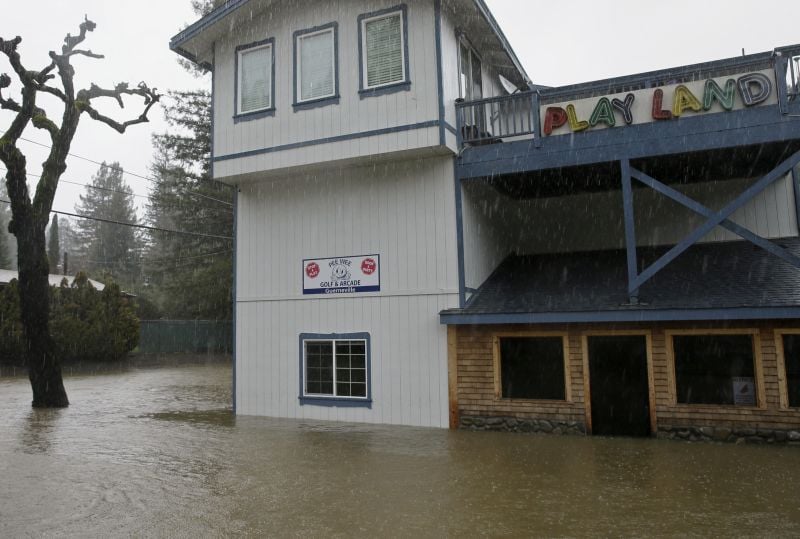The National Flood Insurance Program (NFIP) is differentfrom commercial insurance because all claims are paid from thetreasury of the United States.
|For that reason the NFIP is strictly construed by the federalcourts.
|In Harris v. Nationwide Mutual Fire Insurance Co., theU.S. Court of Appeals for the Sixth Circuit was called upon toresolve a dispute relating to the priorities and federal preemptionrequired of claims against an NFIP policy.
|Plaintiffs Michael and Beverly Harris, appealed the districtcourt's orders dismissing their claims against NationwideMutual.
|Case background
In August 2006, the Harrises procured a mortgage from Regions, abank, to purchase a home near the Cumberland River outside ofNashville, Tenn. The deed of trust for the property obligatedRegions to ensure that the flood-zone designation was correct, andthat the plaintiffs had proper insurance coverage. The NationalFlood Insurance Act (NFIA) requires mortgagors to obtain floodinsurance for properties in flood zones.
|CoreLogic provided Regions with flood-zone certificationservices for the property. The 1981 NFIP Flood Insurance Rate Map(FIRM) for the area showed that the property was in a Special FloodHazard Area (SFHA), but CoreLogic informed the Harrises that theydid not need flood insurance because their property was in an “X”(non-SFHA) flood zone.
|The Federal EmergencyManagement Agency (FEMA) issued a revised FIRM for the area inSeptember 2006, and Regions promptly contacted the plaintiffs toinform them that their home was in an “AE” flood zone, and thatthey must procure flood insurance within 45 days. The Harriseshired David Vandenbergh to purchase flood insurance fromNationwide.
|The Standard Flood Insurance Policy (SFIP) that Vandenberghprocured was a pre-FIRM policy, that is, a policy for a homeconstructed before the effective FIRM for the property. Theplaintiffs' home, however, was built in 1984, after the 1981 FIRMfor the area, and required a post-FIRM policy, under which theHarrises could receive full coverage only after obtaining anelevation certificate showing sufficient elevation above the baseflood zone. The plaintiffs received copies of their pre-FIRM SFIPreflecting no coverage for their personal property, and did not optto alter their coverage.
|Related: Groups join to push flood insurancereform
|A flood struck the area in May 2010, submerging the plaintiffs'home in 16 inches of water. Nationwide informed the Harrises thatthe flood-zone rating information on their property was incomplete,due to the pre-/post-FIRM discrepancy, and Nationwide required anelevation certificate for full building coverage.
|
Flooding surrounds an arcade and miniature golf courseTuesday, Jan. 10, 2017, in Guerneville, Calif. (AP Photo/EricRisberg)
|The plaintiffs obtained an elevation certificate showing thattheir home's lower level was below the base flood-zone elevation.Nationwide adjusted the plaintiffs' Flood claim according topost-FIRM criteria, and did not cover certain building and personalproperty losses excluded in the relevant coverage limitations.Specifically, because the plaintiffs' home was post-FIRM andsituated below the base flood-zone elevation, their SFIP did notcover all building and personal property losses “below the lowestelevated floor.” Following administrative review, FEMA upheldNationwide's coverage determination.
|Related: What will flood insurance look like after2017?
|The Harrises sued in both state and federal courts seekingdamages for claim underpayment, diminution in property value andwrongful purchase of the home. With the exception of one claimagainst Vandenbergh, the district court granted each defendant'smotion to dismiss and accepted a stipulation dismissing Nationwideas a defendant. In light of the plaintiffs' inaction, the districtcourt dismissed the case without prejudice.
|Cases analysis
The NFIA aims to foster availability of affordable Floodinsurance. The plaintiffs rightly concede that the NFIA does notprovide them, as borrowers, with a private right of action againstlenders or flood-zone certifiers. On appeal, they renewed onlytheir state-law claims arising from procurement of their SFIP —namely, that they would not have purchased their home absentdefendants-appellees' negligence and breach of fiduciary duty inmistakenly determining their flood zone. At issue is whether theNFIA preempts such claims.
|The NFIA indisputably preempts state-law causes of action basedon the handling and disposition of SFIP claims. In determiningwhether a plaintiff's cause of action arises from claim handling orpolicy procurement, the Sixth Circuit looked to whether theplaintiffs were already covered by an SFIP, or instead werepotential future policyholders.
|NFIA does not preempt policy-procurement claims such as theclaims presented by the plaintiffs. Damages stemming frompolicy-procurement claims, unlike those arising frompolicy-coverage claims, are not Flood policy claim payments. Thatbeing so, the U.S. Treasury bears no responsibility for damagesawarded in policy-procurement actions.
|Related: Getting into the habit of offering floodinsurance
|Therefore, because policy-procurement damages pose no danger tothe federal interests prompting preemption in the claims-handlingcontext, that is, reducing fiscal pressure on federal flood reliefefforts, the policy-procurement claims of the plaintiffs are notpreempted by federal law.
|The district court's partial grant of summary judgment toVandenbergh was granted and its orders dismissing the remainingdefendants was vacated. The case was remanded to the district courtfor proceedings consistent with its opinion.
|Barry Zalma, Esq., CFE, is a California attorney, insuranceconsultant and expert witness specializing in insurance coverage,claims handling, bad faith and fraud. Contact himat [email protected].
Want to continue reading?
Become a Free PropertyCasualty360 Digital Reader
Your access to unlimited PropertyCasualty360 content isn’t changing.
Once you are an ALM digital member, you’ll receive:
- All PropertyCasualty360.com news coverage, best practices, and in-depth analysis.
- Educational webcasts, resources from industry leaders, and informative newsletters.
- Other award-winning websites including BenefitsPRO.com and ThinkAdvisor.com.
Already have an account? Sign In
© 2024 ALM Global, LLC, All Rights Reserved. Request academic re-use from www.copyright.com. All other uses, submit a request to [email protected]. For more information visit Asset & Logo Licensing.








